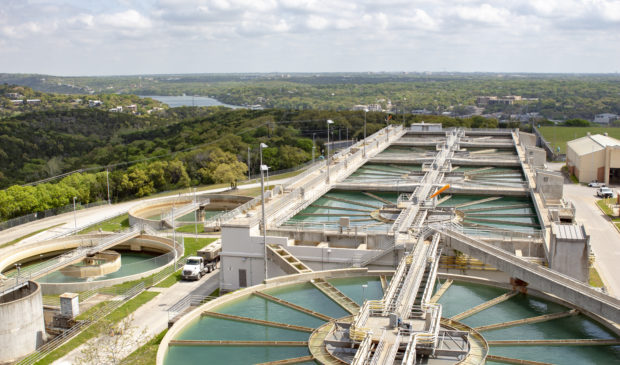ZAP OKs Ullrich plant variances
Wednesday, December 23, 2020 by
Seth Smalley The Zoning and Platting Commission voted at its Dec. 15 meeting to recommend the approval of seven environmental variances for the Ullrich Water Treatment Plant, with a stipulation that the size of an access road included in the project be verified to be the minimum deviation from code.
The property, 141 acres adjacent to the Tom Miller Dam, presents a number of environmental constraints that require the variances, such as its location in a drinking water protection zone and its boundaries with critical water quality zones. The property is also home to heritage trees and environmental features.
If approved, the variances would allow for the construction of an access road, duct bank, switch-gear enclosure, sludge changeover facility, and a containment basin. Despite environmental concerns over the construction locations, most commissioners agreed the project could not be avoided due to safety and regulatory concerns.
“Our staff recognizes that the proposed projects are necessary to make critical upgrades, to replace old and outdated equipment, to provide improved environmental controls, and to increase safety for plant staff,” said Pamela Abee-Taulli, an environmental planner with the Development Services Department.
The variances would allow for development in a critical water quality zone, construction within a critical environmental feature, construction of a driveway with a greater-than-15-percent slope gradient, construction of a building with a greater-than-25-percent slope gradient, a 16-foot cut for a containment basin, a 12-foot fill for the duct-bank and access drive, and for impervious cover to exceed the 20 percent maximum coverage for land upland of a water supply suburban watershed.
Bobby Levinski with the Save Our Springs Alliance spoke in opposition to the variances.
“For the vast majority of the variances, we understand the need. You can’t really do a project on the site without variances, given its use and location. However, where we diverge in our thinking is in the implementation of the access road,” Levinski said. He pointed out that the original rationale for the construction of the loop access road was so the trucks could circle around to Red Bud Trail without having to turn around.
Only after the SOS Alliance objected to the rationale, Levinski argued, was it noted that “the duct-bank would need manholes, and you need truck access to reach the manholes.”
“It may be true that you need truck access to reach the manholes, but I’m not sure that a full access road would be needed for that, or that an entire loop-access would be needed. There should be some sort of configuration to allow limited access, without having to get all the way back around,” Levinski said.
Commissioner Hank Smith, who had spoken with environmental commissioners familiar with the case, reiterated their belief in the necessity of the variances.
“The Environmental Commission spent a lot of time looking this over and felt like they had done everything they could to make this as good a situation as possible, knowing that it had to be built in an environmentally sensitive area,” Smith said.
In a display of diplomacy, ZAP Commissioner David King asked whether it would be possible to caveat a motion of recommendation for the variances on the condition that the size of the road be minimized as much as possible.
Development Services Department staff affirmed the possibility of the caveat, but expressed doubt that it would change anything, saying both the size and the width of the approximately 900-foot road had already been minimized. King also suggested the possibility of using permeable pavers to build the road, an idea which was shot down.
The motion to recommend the variances, caveat included, was passed in a 9-1 vote by ZAP commissioners.
The Austin Monitor’s work is made possible by donations from the community. Though our reporting covers donors from time to time, we are careful to keep business and editorial efforts separate while maintaining transparency. A complete list of donors is available here, and our code of ethics is explained here.
You're a community leader
And we’re honored you look to us for serious, in-depth news. You know a strong community needs local and dedicated watchdog reporting. We’re here for you and that won’t change. Now will you take the powerful next step and support our nonprofit news organization?










